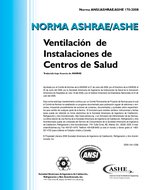Description
Click here to purchase
Building energy modeling (BEM) involves many input parameters, including weather conditions, building geometry and properties, and building system and occupant information. Typical Meteorological Year (TMY) data are often used for the definition of weather conditions without considering urban microclimate variations. Compared to other inputs, the impacts of urban microclimate on BEM results are not adequately understood, and the literature also often presents inconsistent conclusions. In this paper, we conducted a sensitivity analysis (SA) to quantify the importance of urban microclimate and to identify the key parameters for the model output variations. Based on the Sensitivity Value Index (SVI), 13 BEM inputs were evaluated. It shows that the outdoor air temperature and wind speed play an essential role in building cooling energy usages in the hot and arid climate. Then, two approaches to estimating urban climate impacts on BEMs were compared in terms of outdoor air temperature, wind speed, and humidity in Lusail, Qatar by the 3D urban microclimate CFD model, City Fast Fluid Dynamics (CityFFD), and the simplified microclimate model, Urban Weather Generator (UWG). A comparative analysis of the simulation results to the local weather station measurements reveals the capabilities of the two approaches to estimating urban microclimate impacts on building energy performance.
Product Details
- Published:
- 2022
- Number of Pages:
- 9
- Units of Measure:
- Dual
- File Size:
- 1 file , 3.8 MB
- Product Code(s):
- D-TO-22-C043
- Note:
- This product is unavailable in Russia, Belarus




